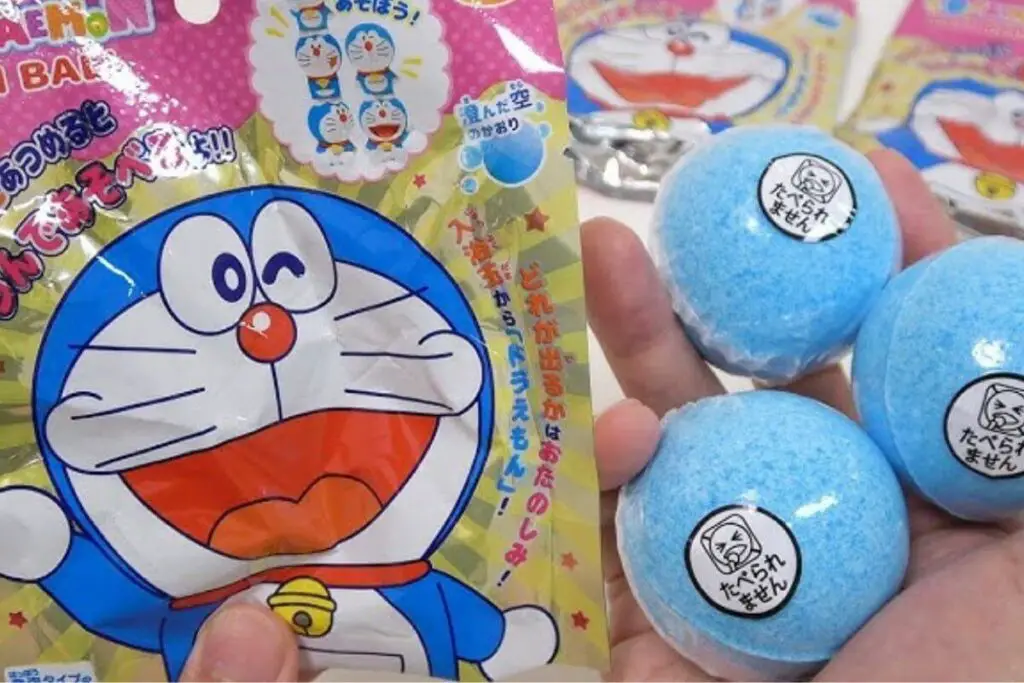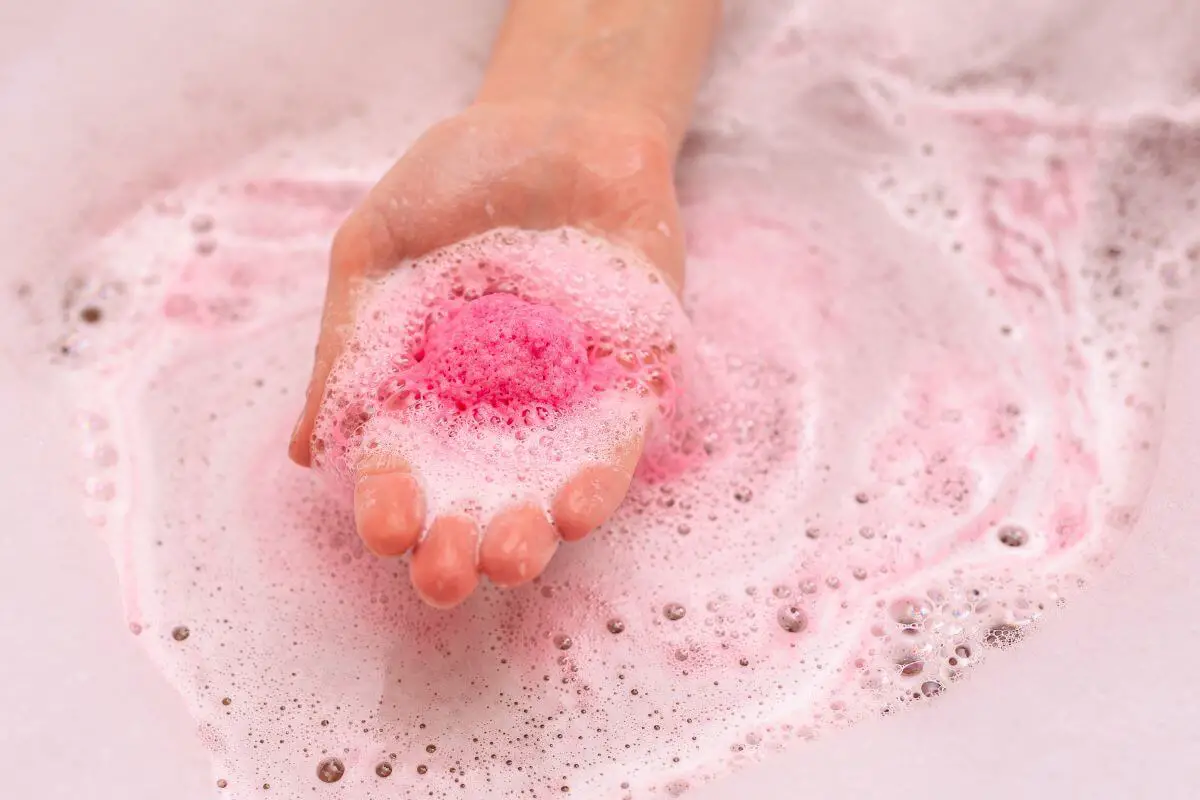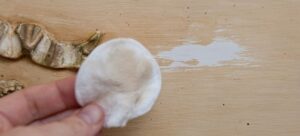In the realm of self-care and indulgence, few experiences rival the simple pleasure of a soothing bath. The fragrant steam, the warm embrace of the water, and the opportunity to unwind and rejuvenate are moments of pure bliss. But what if we told you that this tranquil experience could be elevated even further? Enter the enchanting world of Bath Bombs and Froth Bombs, two captivating bath-time companions designed to transport you to a realm of effervescence and luxury.
These delightful spheres have taken the world of bathing by storm, offering an array of colors, scents, and sensations that transform your bath into a haven of relaxation. In this comprehensive exploration, we’ll embark on a bubbly journey, comparing the composition, effects, benefits, and much more of Bath Bombs and Froth Bombs. So, prepare to immerse yourself in the world of frothy relaxation as we unravel the secrets of these beloved bath-time companions.
The Bath Bomb
Bath Bombs have become a symbol of indulgence and relaxation in the world of self-care. These effervescent spheres, often shaped like colorful orbs or intricate shapes, hold the promise of turning an ordinary bath into a sensory adventure. But what exactly makes up a Bath Bomb, and how does it work its magic on your bathing experience?

Composition
The heart of a Bath Bomb lies in its composition, carefully crafted to provide a multi-sensory delight. While the exact ingredients can vary between brands and formulations, there are several key components that make up the core of a typical Bath Bomb:
- Sodium Bicarbonate (Baking Soda): This ingredient is the primary driver of the famous fizz in a Bath Bomb. It reacts with citric acid, releasing carbon dioxide gas when it encounters water, creating effervescent bubbles.
- Citric Acid: When it mingles with sodium bicarbonate in the presence of water, citric acid sparks the fizzy reaction. It also adds a tartness to the Bath Bomb’s scent.
- Epsom Salts: Epsom salts, derived from magnesium sulfate, are often included for their soothing and muscle-relaxing properties.
- Essential Oils: These aromatic oils infuse the bathwater with delightful scents that can range from lavender and chamomile for relaxation to citrus and mint for an invigorating experience.
- Additional Ingredients: Depending on the specific Bath Bomb, you might find a variety of other ingredients, such as shea butter, coconut oil, or natural coloring agents.
Effects
The magic of a Bath Bomb comes to life when it encounters water. As soon as it’s submerged in your bath, the sodium bicarbonate and citric acid within the Bomb react, creating a spectacular effervescent display. This fizzing action, coupled with the release of aromatic essential oils, transforms your bathwater into a fragrant, colorful haven. The Bath Bomb dissolves slowly, releasing the Epsom salts and other beneficial ingredients into the water.
Benefits
Beyond the delightful sensory experience, Bath Bombs offer a range of potential benefits:
- Relaxation: The fizzy display, along with the aromatic scents, helps to alleviate stress and induce a state of relaxation.
- Skin Nourishment: Some Bath Bombs contain ingredients like shea butter and coconut oil, which moisturize and nourish the skin, leaving it feeling soft and supple.
- Aromatherapy: The essential oils in Bath Bombs can provide aromatherapy benefits, enhancing your mood and promoting a sense of well-being.
In the world of bath-time luxuries, Bath Bombs have carved out a special place, offering a delightful and rejuvenating experience that can turn a simple bath into a fragrant, fizzy retreat. Whether you seek relaxation, skin pampering, or an aromatic escape, the Bath Bomb is here to cater to your senses.
The Froth Bomb
Composition
Froth Bombs are the new kids on the block, designed to take your bath-time experience to the next level. They share some similarities with Bath Bombs, including the use of sodium bicarbonate, citric acid, and essential oils. However, Froth Bombs also contain SLSA (Sodium Lauryl Sulfoacetate), which is responsible for creating the rich, creamy froth that characterizes these bath companions.
Effects
When a Froth Bomb meets water, it doesn’t fizz wildly like a Bath Bomb. Instead, it begins to froth and foam luxuriously, creating a thick layer of creamy bubbles on the water’s surface. This frothy layer encapsulates your bath, offering a unique sensory experience. It’s not just about the aromatic scents; it’s about indulging in the creamy cloud that forms above your bath.
Benefits
- Visual Delight: Froth Bombs provide a mesmerizing visual display, akin to a frothy dream.
- Moisturizing: The frothy layer can contain moisturizing ingredients that nourish the skin as you soak.
- Sensory Experience: The creamy froth provides a tactile sensation, making your bath feel truly indulgent.
The Verdict
So, which will it be – the classic Bath Bomb or the innovative Froth Bomb?
Bath Bombs are beloved for their effervescence and aromatherapy benefits. They create a colorful spectacle in your bath and are renowned for their skin-nourishing properties. If you love the idea of a fizzy, fragrant bath, Bath Bombs are the way to go.
Froth Bombs, on the other hand, offer a unique sensory experience. If you crave a creamy, frothy layer on your bath and enjoy a more tactile, visually appealing soak, Froth Bombs will be your preferred choice.
In the end, the decision is yours, and it ultimately depends on your bath-time desires. Whether you choose the fizz of a Bath Bomb or the froth of a Froth Bomb, both promise to transform your bath into a sanctuary of relaxation and delight. So, drop one in, sink into the water, and let your cares dissolve in the magic of bubbles and fragrances.
FAQs
1. What is climate change, and what are its causes?
Climate change is the long-term alteration of Earth’s climate. Its primary causes include the emission of greenhouse gases, deforestation, and industrial activities.
2. How can I reduce my energy consumption at home and lower my electricity bills?
You can reduce energy consumption by using energy-efficient appliances, sealing leaks, using LED lighting, and setting thermostats at moderate temperatures.
3. What are the most effective strategies for weight loss and maintaining a healthy diet?
Effective weight loss strategies include balanced eating, regular exercise, portion control, and staying hydrated.
4. What is the difference between a vegetarian and vegan diet?
Vegetarians exclude meat, while vegans exclude all animal products, including dairy and eggs.
5. How can I improve my time management skills and boost productivity?
Improve time management by setting priorities, creating schedules, minimizing distractions, and taking regular breaks.
6. What are the benefits of regular exercise for overall health and well-being?
Regular exercise promotes cardiovascular health, mental well-being, weight management, and stronger muscles and bones.
7. How can I build a strong and effective personal budget to manage my finances?
Create a personal budget by tracking income and expenses, setting financial goals, and following a spending plan.
8. What is the importance of cybersecurity and protecting my personal data online?
Cybersecurity is crucial for protecting personal data, financial information, and privacy. It helps prevent identity theft and financial losses.
9. How do I choose the right college or university for my academic and career goals?
Choose the right college by considering factors like academic programs, location, cost, campus culture, and career opportunities.
10. What are the key steps in starting a small business and ensuring its success? –
Key steps include market research, creating a business plan, securing financing, selecting a legal structure, and marketing your business effectively.
11. What is the role of renewable energy sources in reducing environmental pollution?
Renewable energy sources, like solar and wind power, reduce pollution by producing clean energy and decreasing reliance on fossil fuels.
12. How can I create an effective and engaging social media marketing strategy for my business?
An effective social media strategy involves setting clear goals, targeting your audience, creating engaging content, and analyzing results.
13. What are the steps to effective conflict resolution in personal and professional relationships?
Steps include active listening, seeking common ground, maintaining respect, and finding mutually beneficial solutions.
14. How can I develop strong leadership skills and qualities in the workplace?
Develop leadership skills by setting an example, communicating effectively, empowering others, and adapting to change.
15. What is the significance of space exploration, and what have we learned from it?
Space exploration expands our knowledge of the universe, offers technological advancements, and provides insights into Earth’s climate and history.
16. How do I write an attention-grabbing and effective resume for job applications?
Write an effective resume by highlighting relevant skills and experiences, using action verbs, and tailoring it to the job description.
17. What are the benefits of reading and how can I develop a reading habit?
Reading enhances knowledge, reduces stress, and improves focus. To develop a reading habit, set aside dedicated time and choose books that interest you.
18. What are the steps involved in planning and organizing a successful event or gathering?
Steps include defining the event’s purpose, setting a budget, choosing a venue, promoting the event, and ensuring logistical details are well-organized.
19. How can I create a strong and secure password for my online accounts?
Create a strong password by using a mix of letters, numbers, and special characters, avoiding easily guessable information, and using unique passwords for each account.
20. What are the best practices for maintaining a healthy work-life balance and preventing burnout?
Maintain work-life balance by setting boundaries, scheduling regular breaks, prioritizing self-care, and seeking support when needed.
These FAQs provide answers to common questions across various subjects, offering valuable information and guidance to readers.




